Papers by Jelena Bulatović
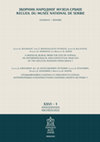
Zbornik Narodnog Muzeja Srbije, 2023
In 1956, the Institute of Archaeology and the National Museum in Belgrade carried out excavation... more In 1956, the Institute of Archaeology and the National Museum in Belgrade carried out excavations at the site of Supska, near Ćuprija, in Central Serbia. Based on the material culture findings, the site is mostly known as a Late Neolithic one; however, archaeological findings from other periods were discovered too. In the 1956 excavations, the cultural layers, and archaeological features with the Vinča culture archaeological materials were examined, as well as one grave, marked as Grave 1. The results of this excavation have been previously published in one monograph; however, an anthropological analysis of the individual found in Grave 1 has not been conducted before. In this paper, we present the results of contextual, bioanthropological, stable isotopes and C14 analyses of human skeletal remains found in Grave 1. The results showed that a young adult, who had experienced nonspecific metabolic stress during childhood, as evidenced by traces of linear enamel hypoplasia and porotic hyperostosis, was buried in this grave. AMS date revealed that this individual lived between 1280–1390 cal. AD, while the results of the stable isotope analyses suggested that it had mixed diet based on C4 plants (such as millet) and/or C3 plants, with larger amounts of animal protein, possible deriving from freshwater fish.
Гласник Српског археолошког друштва 39, 2023
Relatively Absolute. Relative and Absolute Chronologies in the Neolithic of Southeast Europe, 2023
Late Neolithic chronology in the contact zone between the
south edge of the Carpathian Mountains ... more Late Neolithic chronology in the contact zone between the
south edge of the Carpathian Mountains and the Pannonian
plain – the case study of the Vršac region

Relatively Absolute. Relative and Absolute Chronologies in the Neolithic of Southeast Europe, 2023
Various socio-economic changes, including the introduction of metallurgy, mark the long duration ... more Various socio-economic changes, including the introduction of metallurgy, mark the long duration of the Vinča culture. For detailed studies of the transformations of the Vinča societies, analyses of subsistence and economy must also be placed on the chronological line. The small-sized excavations carried out in 2018 at the Late Neolithic site of Jablanica
(c. 5000–4700 BC) in central Serbia provided a faunal assemblage that enabled analyses of animal exploitation patterns, bone technology and also provided the samples for radiocarbon dating. The faunal remains show the predominance of domestic species, especially cattle.
The site also yielded approximately 90 artefacts produced from bone and antler, including finished objects, preforms and manufacturing debris. Predominant raw materials were bones, mainly long bones, metapodials and ribs, followed by red deer antlers. Also, one artefact from Spondylus shell was found. Awls were the most frequent techno-type, and the typological repertoire also included other pointed tools, scrapers and other tools. Several preforms (mainly awls) and manufacture debris provided evidence of a working area or workshop within the settlement. Absolute dates showed that the beginning of the Late Neolithic occupation at the site of Jablanica could be equated with the relative depths of 4.5 meters at the type site of Vinča – Belo Brdo, or the late Vinča Pločnik I (Vinča C) period, while the radiocarbon dates associated with the end of the Late Neolithic occupation of the site can be correlated to layers
between 4.0 and 3.5 meters at the type site of Vinča, i.e., the Vinča Pločnik IIa.
Nova antička Duklja XIII, 2022
U ovom radu predstavljeni su rezultati arheozoološke analize životinjskih ostataka sa nalazišta M... more U ovom radu predstavljeni su rezultati arheozoološke analize životinjskih ostataka sa nalazišta Medun. Na osnovu pisanih izvora i arheoloških istraživanja sprovedenih tokom 2020. i 2021. godine, na ovom prostoru identifikovani su tragovi naseljavanja sa prekidima, počev od bronzanog doba i helinističkog perioda, preko ranovizantijskog, do kasnog srednjeg veka i turskog perioda koji se završava oslobođenjem tvrđave 1876. godine, ubrzo posle čega život na ovom prostoru i prestaje. Iako je faunalni uzorak sa nalazišta Medun relativno mali, dobijeni su podaci o njegovim tafonomskim karakteristikama, kao i o zastupljenosti vrsta domaćih i divljih životinja tokom različitih perioda života na ovom prostoru. Od domaćih životinja, identifikovani su ostaci govečeta, svinje, ovce, koze, konja i kokoške, a od divljih – zeca i jelena.

International Journal of Osteoarchaeology , 2023
Bird bones were rarely used for production of artifacts, due to various reasons—they were much sm... more Bird bones were rarely used for production of artifacts, due to various reasons—they were much smaller and thinner than bones of mammals usually selected for tool production; they also have specific shapes and fine structure, inadequate for the majority of common artifact types. They were occasionally used for some specific objects, such as flutes, pipes, needle cases, and amulets. When it comes to the Eneolithic and Early Bronze Age periods in south-eastern Europe, bird bone artifacts are rare; only few have been discovered thus far. In this paper, we will present one additional finding of a bird bone artifact, from the site of Zók–Gradina, situated in present-day Hungary. Excavations carried out in 1920 by the National Museum in Belgrade revealed a multi-period site, with major parts of the stratigraphic sequence belonging to the Late Eneolithic/Early Bronze Age Vučedol culture (2900–2500/2400 BC). Vučedol layers yielded relatively large quantities of worked bone, including one artifact produced from a bird bone, that will be presented here. The object in question was produced from the right radius of a Cygnus sp.; it is in the shape of an elongated tube; carefully cut at both ends. The function of this item is uncertain—it may have served as some sound-producing instrument (flute), or it was some sort of a handle or needle case. It is interesting to note that bird representations, in particular, ornithomorphic vessels, are among the specific traits of the Vučedol culture; therefore, the choice of a bird bone for the production of this artifact may have had a certain symbolic significance as well.

The paper presents the concept, methodology and preliminary results of the project Regional Absol... more The paper presents the concept, methodology and preliminary results of the project Regional Absolute Chronologies of the Late Neolithic in Serbia that started in 2020 using a case study from the site of At near Vršac in northeast Serbia. The aim of the project is to create multiple new regional chronological strands consisting of Bayesian modelled radiocarbon dates from sites with material culture belonging to the tradition of the Late Neolithic period Vinča culture. Combining statistical seriation of pottery assemblages and the Bayesian statistical modelling framework of several case studies from various regions of Serbia, new regional chronological anchor points will be created, thus avoiding constant comparison with the assemblage and dating of the eponymous site of Belo Brdo in Vinča. This approach will overcome the effects of the regionalization of material culture evident in most ceramic assemblages located further than 100 kilometres away from the type site. Using archival archaeological records from previous excavations will enable an establishment of a geography of chronological reference points which would then provide new insights into the dynamics of the evolution of the Late Neolithic Vinča societies and changes that occurred throughout its territory during the late sixth and the larger part of the fifth millennia BCE.
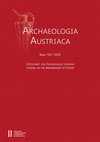
Archaeologia Austriaca, 2022
The excavations at Svinjarička Čuka in the South Morava Valley in
Serbia are presented with new ... more The excavations at Svinjarička Čuka in the South Morava Valley in
Serbia are presented with new primary data from the field and related
material and scientific analyses. Newly recovered architectural
remains from the classical Starčevo period revealed a variety of domestic
features, so far belonging to an earlier and later occupation
phase at the river terrace dating between 5700/5600 and 5500 BC.
Details of the stratigraphy and certain materials are presented for selected
domestic contexts, including one potential ‘Starčevo house’.
Archaeological and scientific analyses are discussed and contextualised
within the Neolithisation process in the chapters on new radiocarbon
data and their Bayesian modelling, pottery studies, chipped
stones and their raw material analyses, grinding kits, animal remains,
archaeobotanical results and charcoal analysis. The later occupation
at the site is presented with new results for the Middle and Late
Bronze Age and the Early Iron Age, including domestic contexts,
radiocarbon data and materials.
Antiquity Project Gallery, Nov 9, 2022
A recent study from Central Europe has changed our perception of the cat's domestication history.... more A recent study from Central Europe has changed our perception of the cat's domestication history. The authors discuss how this has led to the development of an interdisciplinary project combining palaeogenetics, zooarchaeology and radiocarbon dating, with the aim of providing insight into the domestic cat's expansion beyond the Mediterranean.
International Journal of Osteoarchaeology, 2022
Бубањ, праисторијско насеље и некропола из новог века , 2022
Овај рад даје преглед досадашњих резултата анализа биљних и животињских остатака прикупљених на е... more Овај рад даје преглед досадашњих резултата анализа биљних и животињских остатака прикупљених на енеолитским налазиштима у Србији. Ове врсте анализа су до сада обављене на малом броју локалитета и величина узорка је ограничена како нивоом очуваности тако и методологијом издвајања и обраде материјала. Иако скромни, подаци који су на располагању ипак нуде основ за општа запажања о економским активностима енеолитских заједница на територији Србије.
Godišnjak CBI, 2021
The Selimiye is a mosque complex located in the old city's center of Doboj-the Upper Town (čaršij... more The Selimiye is a mosque complex located in the old city's center of Doboj-the Upper Town (čaršija). We present the results of the first interdisciplinary analysis of archaeological and bioarchaeological finds from its excavations in 1994 attempting to get the first insights into living conditions of the Ottoman period Bosnia. Archaeological assemblage dated to the 16 th-19 th century is composed of pottery, clay tobacco pipes, small everyday metal objects, functional parts of costume, and glass fragments. Animal remains were probably associated with ritual context of food consumption during the Eid al-Adha feasts. Burial of a child inside the mosque's harem indicates its belonging to an upper class Muslim family of Doboj.
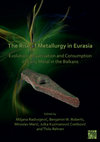
Radivojević, M., Roberts, B. W., Marić, M., Kuzmanović Cvetković, J., Rehren, Th. (Eds.). The Rise of Metallurgy in Eurasia: Evolution, Organisation and Consumption of Early Metal in the Balkans. Oxford: Archaeopress., 2021
Chapter 14 Belovode: technology of pottery production �������������������������������������������... more Chapter 14 Belovode: technology of pottery production ��������������������������������������������������������������������������������186 Silvia Amicone Chapter 15 Figurines from Belovode ����������������������������������������������������������������������������������������������������������������� 199 Julka Kuzmanović Cvetković Chapter 16 Ground and abrasive stone tools from Belovode ���������������������������������������������������������������������������205 Vidan Dimić and Dragana Antonović Chapter 17 Bone industry from Belovode ���������������������������������������������������������������������������������������������������������215 Selena Vitezović Chapter 18 Chipped stone industry at Belovode ����������������������������������������������������������������������������������������������221 Elmira Ibragimova Chapter 19 Chemical and technological analyses of obsidian from Belovode ������������������������������������������������233 Marina Milić Chapter 20 Archaeobotanical evidence of plant use at the site of Belovode���������������������������������������������������236 Dragana Filipović Chapter 21 Animal remains from Belovode ������������������������������������������������������������������������������������������������������249
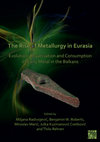
Radivojević, M., Roberts, B. W., Marić, M., Kuzmanović Cvetković, J., Rehren, Th. (Eds.). The Rise of Metallurgy in Eurasia: Evolution, Organisation and Consumption of Early Metal in the Balkans. Oxford: Archaeopress., 2021
Chapter 14 Belovode: technology of pottery production �������������������������������������������... more Chapter 14 Belovode: technology of pottery production ��������������������������������������������������������������������������������186 Silvia Amicone Chapter 15 Figurines from Belovode ����������������������������������������������������������������������������������������������������������������� 199 Julka Kuzmanović Cvetković Chapter 16 Ground and abrasive stone tools from Belovode ���������������������������������������������������������������������������205 Vidan Dimić and Dragana Antonović Chapter 17 Bone industry from Belovode ���������������������������������������������������������������������������������������������������������215 Selena Vitezović Chapter 18 Chipped stone industry at Belovode ����������������������������������������������������������������������������������������������221 Elmira Ibragimova Chapter 19 Chemical and technological analyses of obsidian from Belovode ������������������������������������������������233 Marina Milić Chapter 20 Archaeobotanical evidence of plant use at the site of Belovode���������������������������������������������������236 Dragana Filipović Chapter 21 Animal remains from Belovode ������������������������������������������������������������������������������������������������������249

PLOS ONE, 2021
Late Neolithic Vinča communities, spread over much of central and northern Balkans during the lat... more Late Neolithic Vinča communities, spread over much of central and northern Balkans during the late sixth to mid-fifth millennium BC and characterised by unusually large and densely population centres, would have required highly organised food production systems. Zooarchaeological analysis indicates that domesticate livestock were herded, but little is known about the seasonal husbandry practices that helped ensure a steady supply of animal products to Vinča farming communities. Here, we present new stable carbon (δ 13 C) and oxygen (δ 18 O) isotopic measurements of incremental bioapatite samples from the teeth of domesticated livestock and wild herbivore teeth from two late Neolithic Vinča culture sites: Vinča-Belo brdo and Stubline (Serbia). Our results show a low variation overall within sheep and goats in terms of pasture type that may have been composed of seasonal halophyte plant communities, which have higher δ 13 C values due to the saline rich growing environments. Cattle feeding strategies were more variable and provided with supplementary forage, such as cut branches or leafy hay, during winter. The sharp distinction in the management of cattle and sheep/goat may be associated with the development of herding strategies that sought to balance livestock feeding behaviours with available forage or, more provocatively, the emergence of household-based control over cattle-an animal that held a central economic and symbolic role in Vinča societies.
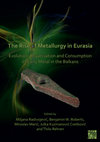
Radivojević, M., Roberts, B. W., Marić, M., Kuzmanović Cvetković, J., & Rehren, Th. (Eds.). (2021). The Rise of Metallurgy in Eurasia: Evolution, Organisation and Consumption of Early Metal in the Balkans. Oxford: Archaeopress. by Miljana Radivojević, Thilo Rehren, Benjamin Roberts, Neda Mirković-Marić, Patrick Mertl, Milica Rajicic, Silvia Amicone, Vidan Dimic, Dragana Filipovic, Jelena Bulatović, Marko Porčić, Enrica Bonato, and Ernst Pernicka The Rise of Metallurgy in Eurasia: Evolution, Organisation and Consumption of Early Metal in the Balkans, 2021
The Rise of Metallurgy in Eurasia is a landmark study in the origins of metallurgy. The project a... more The Rise of Metallurgy in Eurasia is a landmark study in the origins of metallurgy. The project aimed to trace the invention and innovation of metallurgy in the Balkans. It combined targeted excavations and surveys with extensive scientific analyses at two Neolithic-Chalcolithic copper production and consumption sites, Belovode and Pločnik, in Serbia. At Belovode, the project revealed chronologically and contextually secure evidence for copper smelting in the 49th century BC. This confirms the earlier interpretation of c. 7000-year-old metallurgy at the site, making it the earliest record of fully developed metallurgical activity in the world. However, far from being a rare and elite practice, metallurgy at both Belovode and Pločnik is demonstrated to have been a common and communal craft activity.
This monograph reviews the pre-existing scholarship on early metallurgy in the Balkans. It subsequently presents detailed results from the excavations, surveys and scientific analyses conducted at Belovode and Pločnik. These are followed by new and up-to-date regional syntheses by leading specialists on the Neolithic-Chalcolithic material culture, technologies, settlement and subsistence practices in the Central Balkans. Finally, the monograph places the project results in the context of major debates surrounding early metallurgy in Eurasia before proposing a new agenda for global early metallurgy studies.
Open access and fully downloadable from:
https://doi.org/10.32028/9781803270425
International Journal of Osteoarchaeology

Prilozi Instituta za arheologiju u Zagrebu 38/1, 2021
the existence of ditches and a variety of structures, the first excavation was carried out in lat... more the existence of ditches and a variety of structures, the first excavation was carried out in late 2018 at the mound in Novo Selo. At that point, neither a chronology nor an interpretation of the large earth mounds could be put forward, since there were no comparable investigated structures in the surroundings or surface finds suggesting an approximate age. The excavations in Novo Selo revealed highly remarkable structures and the use of the place as burial grounds in the Late Copper Age (3200-2600 BC), the earliest stage of the Middle Bronze Age (1750-1650 BC), and finally in the late Middle Ages (1000-1300 AD). In terms of cultural affiliation, the Copper Age finds (pottery) and urn cremation burials correspond with the repertoire of the late Baden complex and the Kostolac culture, while the Middle Bronze Age inhumation burial shows similarities with the graves in the lower Drina valley. The discoveries made in Novo Selo exemplify the complexity of burial mounds and their importance for prehistoric communities, especially in an open landscape like Semberija, with multifarious influences from the Balkans, the Carpathian Basin, and the Danube area.
Свет средњовековних утврђења, градова и манастира. Омаж Марку Поповићу / The Medieval World of Fortresses, Towns and Monasteries. Homage to Marko Popović; eds. V. Ivanišević, V. Bikić, I. Bugarski, 2021

Journal of the Serbian Archaeological Society / Гласник Српског археолошког друштва, 2020
In the central Balkans, the period from the second half of the 5th through the mid-3rd millennium... more In the central Balkans, the period from the second half of the 5th through the mid-3rd millennium BC is known as the Eneolithic. The earlier part of this period has been described as the transition between the Late Neolithic and Early Eneolithic and the time of transformations -societal, economic and ideological. Prevailing understanding of the archaeological record from this period is that the remarkable shifts in the settlement system reflect disintegration of the Neolithic society. What effect did this have on food economy? This question has not yet been addressed using the direct evidence of food production and consumption from archaeological sites. Although such evidence is scarce, it has in recent years been enlarged through new excavations, including those at the long-lasting site of Bubanj in southern Serbia. This paper combines the archaeobotanical and zooarchaeological datasets from Bubanj and examines the integrated evidence from a broader chronological and geographical perspective using the information from other Eneolithic and, also, Late Neolithic sites in Serbia. A picture of agricultural diversity emerges, perhaps reflecting diachronic changes in the production methods and choices. These may have been driven by the social and ecological factors that led to the cultural transformations during and after the transitional period.




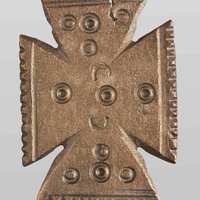

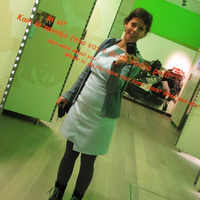




Uploads
Papers by Jelena Bulatović
south edge of the Carpathian Mountains and the Pannonian
plain – the case study of the Vršac region
(c. 5000–4700 BC) in central Serbia provided a faunal assemblage that enabled analyses of animal exploitation patterns, bone technology and also provided the samples for radiocarbon dating. The faunal remains show the predominance of domestic species, especially cattle.
The site also yielded approximately 90 artefacts produced from bone and antler, including finished objects, preforms and manufacturing debris. Predominant raw materials were bones, mainly long bones, metapodials and ribs, followed by red deer antlers. Also, one artefact from Spondylus shell was found. Awls were the most frequent techno-type, and the typological repertoire also included other pointed tools, scrapers and other tools. Several preforms (mainly awls) and manufacture debris provided evidence of a working area or workshop within the settlement. Absolute dates showed that the beginning of the Late Neolithic occupation at the site of Jablanica could be equated with the relative depths of 4.5 meters at the type site of Vinča – Belo Brdo, or the late Vinča Pločnik I (Vinča C) period, while the radiocarbon dates associated with the end of the Late Neolithic occupation of the site can be correlated to layers
between 4.0 and 3.5 meters at the type site of Vinča, i.e., the Vinča Pločnik IIa.
Serbia are presented with new primary data from the field and related
material and scientific analyses. Newly recovered architectural
remains from the classical Starčevo period revealed a variety of domestic
features, so far belonging to an earlier and later occupation
phase at the river terrace dating between 5700/5600 and 5500 BC.
Details of the stratigraphy and certain materials are presented for selected
domestic contexts, including one potential ‘Starčevo house’.
Archaeological and scientific analyses are discussed and contextualised
within the Neolithisation process in the chapters on new radiocarbon
data and their Bayesian modelling, pottery studies, chipped
stones and their raw material analyses, grinding kits, animal remains,
archaeobotanical results and charcoal analysis. The later occupation
at the site is presented with new results for the Middle and Late
Bronze Age and the Early Iron Age, including domestic contexts,
radiocarbon data and materials.
This monograph reviews the pre-existing scholarship on early metallurgy in the Balkans. It subsequently presents detailed results from the excavations, surveys and scientific analyses conducted at Belovode and Pločnik. These are followed by new and up-to-date regional syntheses by leading specialists on the Neolithic-Chalcolithic material culture, technologies, settlement and subsistence practices in the Central Balkans. Finally, the monograph places the project results in the context of major debates surrounding early metallurgy in Eurasia before proposing a new agenda for global early metallurgy studies.
Open access and fully downloadable from:
https://doi.org/10.32028/9781803270425
south edge of the Carpathian Mountains and the Pannonian
plain – the case study of the Vršac region
(c. 5000–4700 BC) in central Serbia provided a faunal assemblage that enabled analyses of animal exploitation patterns, bone technology and also provided the samples for radiocarbon dating. The faunal remains show the predominance of domestic species, especially cattle.
The site also yielded approximately 90 artefacts produced from bone and antler, including finished objects, preforms and manufacturing debris. Predominant raw materials were bones, mainly long bones, metapodials and ribs, followed by red deer antlers. Also, one artefact from Spondylus shell was found. Awls were the most frequent techno-type, and the typological repertoire also included other pointed tools, scrapers and other tools. Several preforms (mainly awls) and manufacture debris provided evidence of a working area or workshop within the settlement. Absolute dates showed that the beginning of the Late Neolithic occupation at the site of Jablanica could be equated with the relative depths of 4.5 meters at the type site of Vinča – Belo Brdo, or the late Vinča Pločnik I (Vinča C) period, while the radiocarbon dates associated with the end of the Late Neolithic occupation of the site can be correlated to layers
between 4.0 and 3.5 meters at the type site of Vinča, i.e., the Vinča Pločnik IIa.
Serbia are presented with new primary data from the field and related
material and scientific analyses. Newly recovered architectural
remains from the classical Starčevo period revealed a variety of domestic
features, so far belonging to an earlier and later occupation
phase at the river terrace dating between 5700/5600 and 5500 BC.
Details of the stratigraphy and certain materials are presented for selected
domestic contexts, including one potential ‘Starčevo house’.
Archaeological and scientific analyses are discussed and contextualised
within the Neolithisation process in the chapters on new radiocarbon
data and their Bayesian modelling, pottery studies, chipped
stones and their raw material analyses, grinding kits, animal remains,
archaeobotanical results and charcoal analysis. The later occupation
at the site is presented with new results for the Middle and Late
Bronze Age and the Early Iron Age, including domestic contexts,
radiocarbon data and materials.
This monograph reviews the pre-existing scholarship on early metallurgy in the Balkans. It subsequently presents detailed results from the excavations, surveys and scientific analyses conducted at Belovode and Pločnik. These are followed by new and up-to-date regional syntheses by leading specialists on the Neolithic-Chalcolithic material culture, technologies, settlement and subsistence practices in the Central Balkans. Finally, the monograph places the project results in the context of major debates surrounding early metallurgy in Eurasia before proposing a new agenda for global early metallurgy studies.
Open access and fully downloadable from:
https://doi.org/10.32028/9781803270425
networks, communications and trade and exchange in a liminal area constantly awashed by influences of major traditions originating
both of the Balkans and the Carpathian basin.
The site with several settlement horizons, occupied between the late sixt millenium and the first millenium BC is a large area of
diverse traces of human activities, illustrating its varying use through time. In our efforts to eludicate the origins, development and transformations of local population through time, a multidisciplinary approach to material culture remains, Bayesian chronological dating of events and scientific analysis of period proxy data is crucial.
We present the current state of research on the Neolithic settlement after five seasons and propose directions for future activities.
In this paper, we present preliminary results based on the analysis of animal remains from the site of Treštena Stena. The broad goal of our research is to reconstruct animal economy at the site during the Late Eneolithic. Some of the more specific aims are to detect which domestic and wild animal species were used, what was their role and significance in the economy, what strategies of animal exploitation were practiced, etc. This research provides the first evidence of the Late Eneolithic animal husbandry and hunting at the territory of present-day North Macedonia, regarding that up to date, archaeozoological data has been missing from this region and period. Our preliminary results indicate that animal economy at the site of Treštena Stena was primarily based on husbandry, while hunting was of less importance. Sheep and goats were the most common herded species, followed by domestic cattle and domestic pig. Red deer is the most frequent wild species, followed by roe deer and wild boar, while hare, aurochs, fox, chamois, and lynx were also present in small number.
These excavations also unearthed large quantities of worked bone, mainly from Late Vučedol layers, including one artefact produced from bird bone that will be presented here. The item in question was produced from right radius from swan (Cygnus sp.). The object in question is in the shape of an elongated tube; carefully cut at both ends. The function of this item is uncertain – it may have served as some sound-producing instrument (flute), or it was some sort of handle or needle case. It is interesting to note that bird representations, in particular ornitomorphic vessels, are one of the specific traits of the Vučedol culture; therefore, the choice of bird bone for production of this artefact may have had a certain symbolic significance as well.
The site of Vis is situated in northern Bosnia, and several archaeological campaigns from 1957-1959. exposed a settlement at Vis site with an area of more than 5000 m2 dated from Early Iron Age, approximately from late 9th century to mid-8th century B.C. During these campaigns Z. Marić investigated some 120 m2 and defined two main phase Vis I-II. Excavation was subsequently carried out on one of terrace/suburbia below Vis hillfort.
Faunal remains were collected selectively; however, some data can be extracted. Only larger, identifiable or complete bones were collected (phalanges, teeth, metapodial bones, etc.). Most of them were identified, and belong to pig, cattle, sheep, goat, red deer, wild swine. Numerous red deer and one roe deer antler were discovered.
Assemblage of osseous objects encompasses approximately thirty-five artefacts, mainly from red deer antlers. Especially interesting are two objects of unclear functions, particularly nicely made, one probably represents horse harness, and the other, heavily polished from intense use, was most likely part of an outfit. Previously unknown tool types are daggers from large herbivore ulnae, sometimes perforated at the base. Most of the assemblage are blanks and manufacture debris – tines and cortex segments with traces of cutting with diverse tools. They clearly demonstrate a workshop for antler manufacture once existed on Vis settlement. Antler working was an important activity even after the metals came into wide use a future research may yield more data on its role in everyday life and economy.